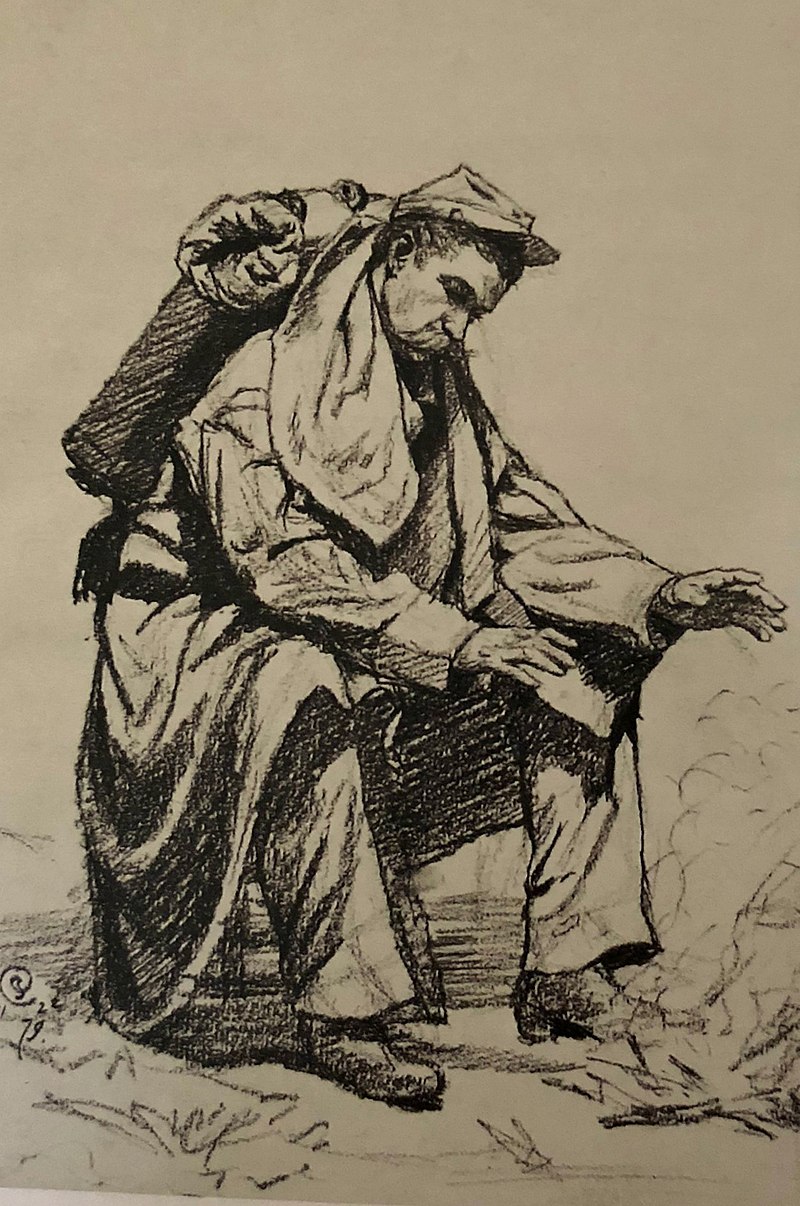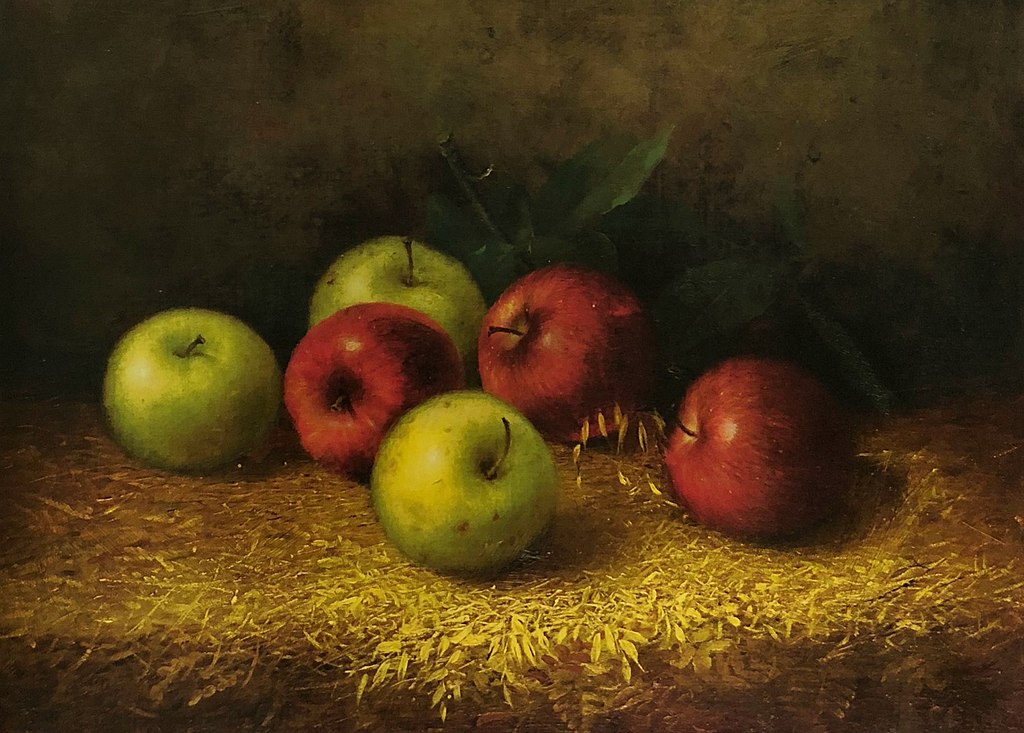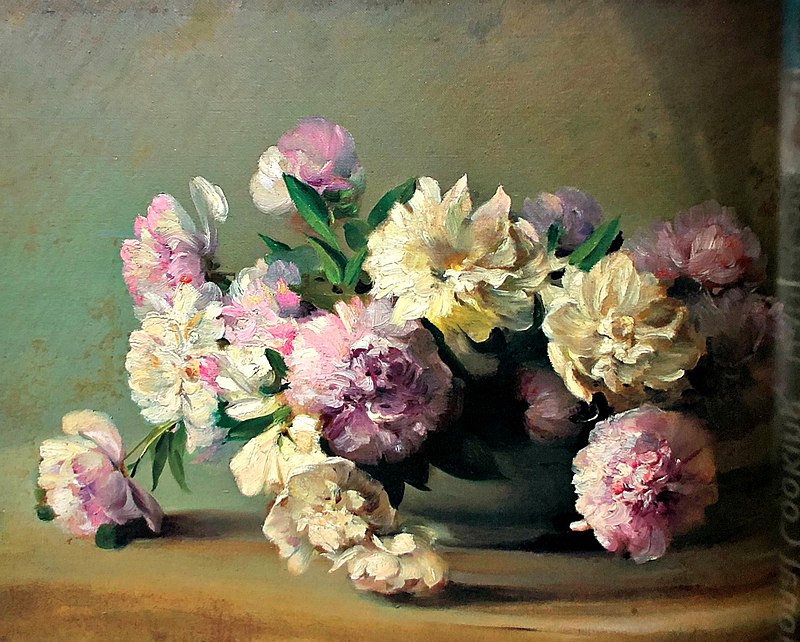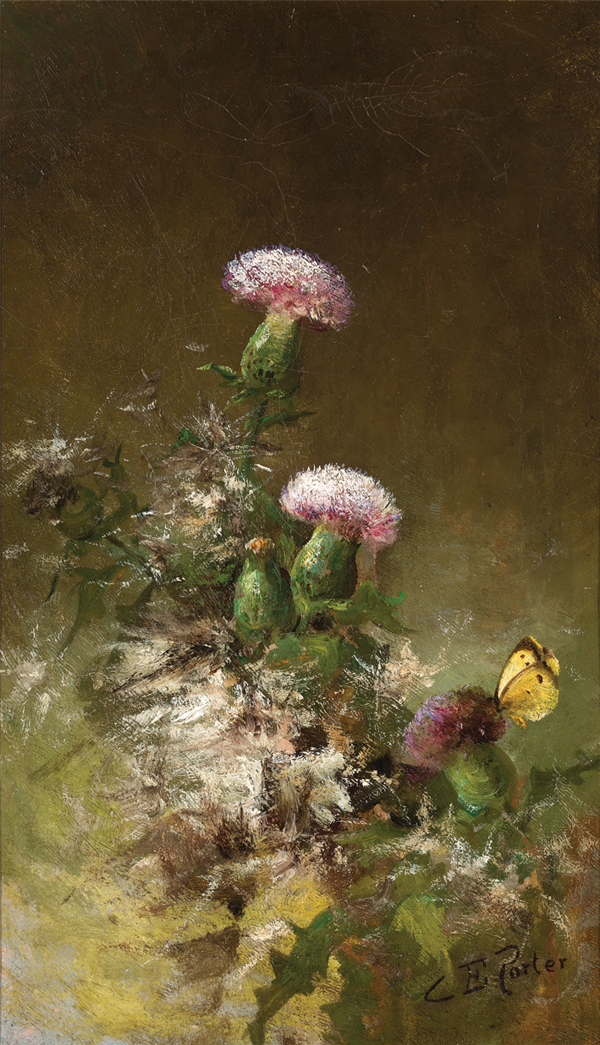Charles Ethan Porter (1847-1923) was born in Hartford, Connecticut. His free African-American family was poor. Illness and the American Civil War took seven of his siblings between the years 1858 and1868. Porter was the first member of the family to graduate from high school (1865). He worked at odd jobs and saved enough money to study painting at the Wesleyan Academy, now Wilbraham Academy, in Massachusetts. He was at first denied admission because he was black, but later he was admitted. He went on to study (1869-1873) at the prestigious National Academy of Design in New York City. Porter was the first African-American student at the Academy.

“Civil War Soldier” (1872)
Porter’s skill is evident in an early drawing “Civil War Soldier” (1872) (pencil) (8.25’’x 6’’). His brothers Joseph and William enlisted in the Union Army and joined Colored regiments in Rhode Island and Connecticut. Joseph died in Virginia in 1864. The family received a letter from him before he was killed, in which he wrote, “Justice, truth, and right must triumph, though it cost my life and friends.” William contracted a serious case of malaria and was discharged in 1865. Porter’s drawing may not be of either brother, but this sketch of a black soldier warming himself by a fire lets the viewer into a brief moment of the Civil War. The Academy praised Porter’s work. He was one of eight art students whose drawings were mentioned in a May1870 New York Times article about the large student exhibition.

“Apples on the Ground” (1878)
Porter began selling paintings in 1873. One of them is recorded as selling for the very good price of $175. He set up his studio in Hartford in1878, where he specialized in still life. The community was growing, and the educated population appreciated Porter’s classical style. Mark Twain, a Hartford resident, purchased several Porters and hung them in his dining room. “Apples on the Ground” (1878) was not the usual still life painting at the time, but it was a commercial success. He would continue to paint apples throughout his career. The three red and three green apples are arranged by color on a bed of yellow wheat. The composition and subject matter are simple. The apples look delicious.
The prominent landscape artist Frederick Edwin Church saw Porter’s work and visited his studio in 1879. He purchased several paintings and declared Porter to “have no superior as a colorist in the United States.” Art Amateur (June 1879) reported that “Charles E. Porter, a negro artist of Hartford [makes] admirable pictures of flowers, fruit, butterflies and other insects, all have a finesse and accuracy of touch that would do credit to the microscopic finish of the old Flemish painters.”

Porter traveled to London and Paris to further his studies. He carried letters of introduction from Mark Twain and other prominent Hartford citizens. He enrolled in the French National Academy of Decorative Arts and the Academy Julian. Porter lived near Henri Fantin-Latour, one of the most celebrated French still life painters of the time. Latour encouraged Porter to paint more freely. “Peonies in a Bowl” (1885) (21”x29’’) is one of Porter’s largest works and is an excellent example of his style. Pink and white peonies spill out of a round bowl. The brush was charged with paint, just the right amount to create a fresh, delicate, and appealing petal. Porter often chose a non-distinct container to hold the flowers. It was just enough to let the flowers tumble to the table.
In a letter to Mark Twain from Paris in1883, Porter expressed his thoughts about his art: “I am aware that there are a goodly number of my Hartford friends and others who are anxious to see how the colored artist will make out. But this is not the motive which impresses me. There is something of more importance, the colored people—my people—as a race I am interested in, and my success will only add to others who have already shown wherein they are capable of the same as other men.”

“Thistles with Butterfly” (1888)
Porter returned home to Hartford in December 1884 because he lacked funds. As he had done before, he held an exhibition and auction of his paintings. A prolific artist, he offered over100 paintings to be sold. The Hartford Evening Post advertised the exhibition, noting the artist’s “broader, freer style.” Porter’s “Thistles with Butterfly” (1888) (20’’x12’’), recently purchased by the Delaware Art Museum, illustrates his new style. The asymmetrical composition depicts thistles and foliage floating on an undecipherable mass of yellow and white paint that transforms into a rich brown background. Two thistles and a Clouded Sulphur butterfly stand out in the composition. Porter’s early paintings often included insects, not a common practice at the time. However, in the 1880s, the study of wildflowers was popular.
When in America, Porter spent the summers painting in the Adirondacks and teaching art classes in Connecticut. Thistles were not a common flower in gardens, but they were found in the wild. Despite their spikey petals, thistles are a source of nectar for bumblebees and foliage for butterfly larvae. Porter may have observed that butterflies are drawn to red flowers.

“Autumn Landscape with Pumpkins and Haystacks” (1890-1891)
While in Paris, Porter saw the landscape paintings of the Barbizon and Impressionist painters. On a visit to the Adirondacks in the 1880s, he had thought to concentrate on landscape painting because landscapes brought in more money. He would paint still-lifes only on commission. He painted several landscapes during his career, but they were not as popular as he had hoped. “Autumn Landscape with Pumpkins and Haystacks” (1890-1891) (17’’x23’’) demonstrates his skill. The fields of yellow and orange hay, haystacks, stream, fall foliage, and the barn all convey the quiet beauty of an autumn day.
Unfortunately, Porter’s style of painting and his subject matter were slowly becoming less popular, along with many other artist. His last years were hard. Porter died from kidney disease in 1923 at the age of 75.
Porter was re-discovered by art dealers and art historians in the1980s. An exhibition at Hartford’s Old State House in 1987 brought Porter renewed attention and appreciation. By 2008, Porter’s work had entered the collections of the Metropolitan Museum, the Smithsonian American Art Museum, the Wadsworth Atheneum, and others. The Porter retrospective at the New Britain Museum of American Art (2008) traveled to The Studio Museum of Harlem and the North Carolina Central University Art Museum in Durham. A New York art dealer Michael Rosenfield summed up Porter’s place in art history in 1980s: “If you turn the clock back 30 years, or 20 years, there weren’t so many people interested in African American art, and certainly not historic works.”
Phillip Johnsons Glass House in New Canaan, Connecticut presented an exhibition titled A Colored Garden (2022) presenting nine Porter still life paintings. The Glass House, now part of the National Trust for Historic Preservation, has begun to develop new projects for the Museum. Porter and the Glass House have a reputation for gardens. A new circular garden was designed on the southern meadow with peonies, chrysanthemums, and other flowers featured in the nine Porter paintings. Porter now is considered an American master, a reputation he well deserves.
Note: The Delaware Museum of Art in Wilmington will exhibit the work of Porter and 10 Black artists in 2024.
Beverly Hall Smith was a professor of art history for 40 years. Since retiring with her husband Kurt to Chestertown in 2014, she has taught art history classes at WC-ALL. She is also an artist whose work is sometimes in exhibitions at Chestertown RiverArts and she paints sets for the Garfield Center for the Arts.


Write a Letter to the Editor on this Article
We encourage readers to offer their point of view on this article by submitting the following form. Editing is sometimes necessary and is done at the discretion of the editorial staff.